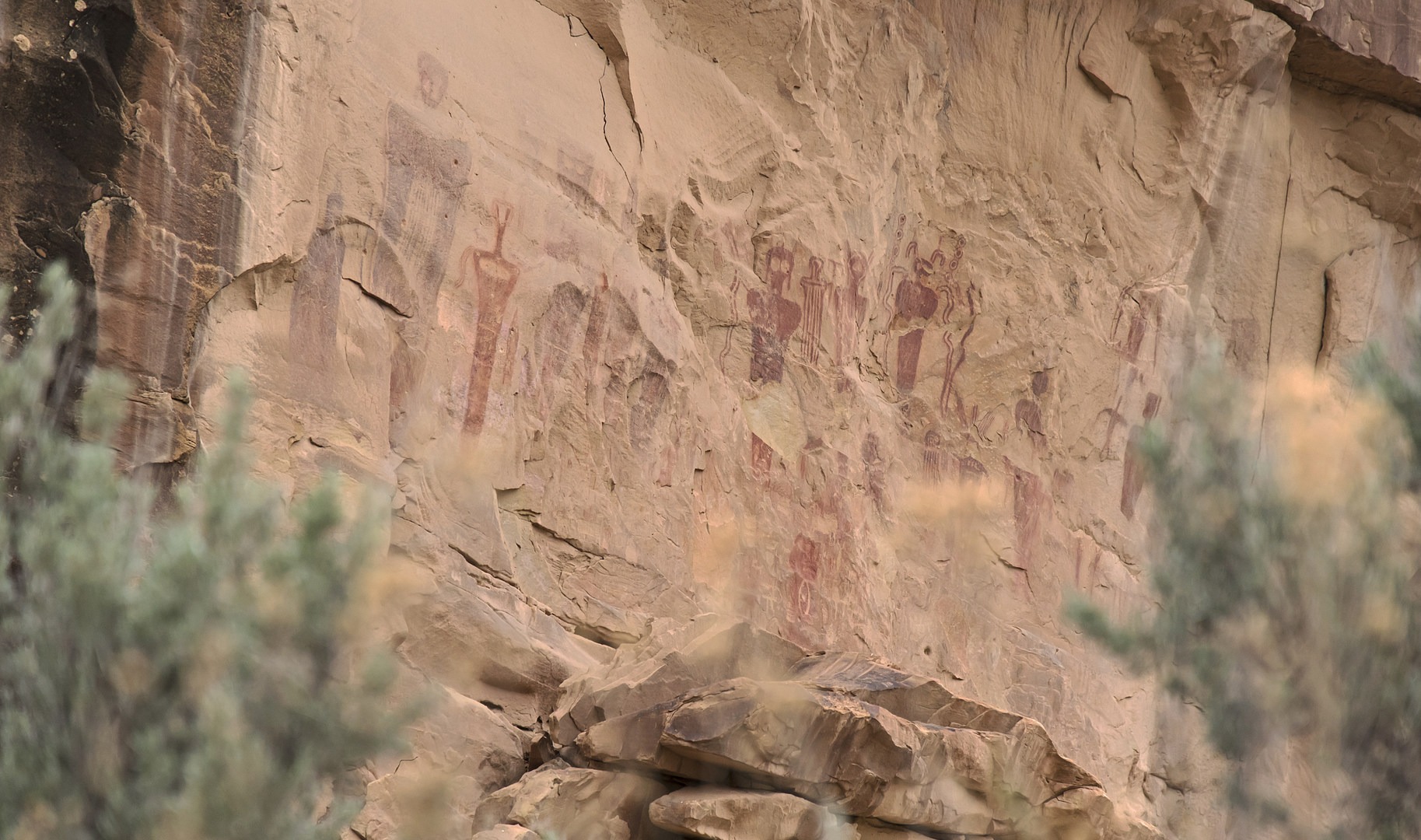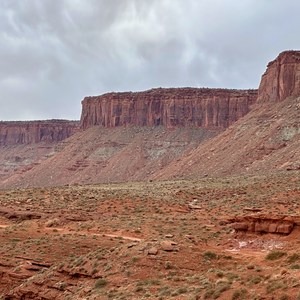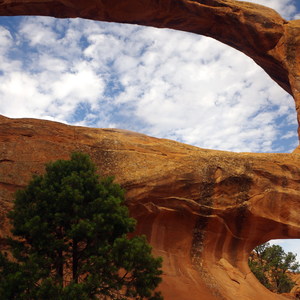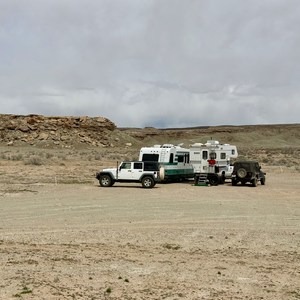You are here
Sego Canyon is not much to look at in terms of natural beauty, especially when compared to the sights you find in nearby Moab, Utah. What it does offer, however, is a fascinating combination of three distinct eras of Native American rock art as well as old pioneer remnants within the same small stretch. Located just north of the small town of Thompson Springs, it's an easy and short trip off of I-70. Once there you will get a chance to see a famous Barrier Canyon Style rock art panel along with several Ute and Fremont panels that basically appear on one large outcropping. One must wonder if this place had some sort of significance to be decorated by successive generations separated by thousands of years. The most recent remains are a large number of pioneer and coal mining structures that remain from the late 1800s into the early 20th century.
Barrier Canyon Style, signified by the use of natural paints to make pictographs, is the most ancient of the art here, and in many ways it is also the most unusual. The style incorporates a strange mix of anthropomorphic figures that leave people wildly speculating at their meaning and origins. The artwork has remained on the walls over the last 4,000 years, and it is made with natural pigments such as charcoal, blood, iron oxide, powdered minerals, mud, and potentially countless organic and inorganic substances. It is unknown what the artists used as a bonding agent, or even what these ancient people were called, but whatever they concocted has really stood the test of time. The figures here are strange and otherworldly...they are even used in the opening montage of the television show Ancient Aliens. Whether the figures represent spirits, animal-human hybrids, shamans, invaders, or just characters from ancient tales is unknown, but they will no doubt inspire some great conversations among anyone who sees them.
Potentially thousands of years later their descendants, who we call the Ute, Fremont and Ancestral Puebloan, decided to add some of their own pieces onto nearby walls. Unlike painted pictographs they instead chipped, chiseled, or scratched the rock away to form petroglyphs using shapes, symbols, and figures that are very different from that of their predecessors. These date to as recently as 700 years ago, but they will most likely remain much longer than the pictographs since they cannot be washed away. The figures you find here seem to be more practical, represent the daily life of the people such as hunting, and are much less abstract than the Barrier Canyon Style.
Throughout the canyon are broken down homes and other structures that were first built by Mormon pioneers before the turn of the century. Later a small coal mining operation popped up, and there are leftover railroad tresses, a cemetery, brick ovens, many homes, and a collapsed general store. There are not too many other places in America where so many periods of our past are on display in such a small area. There are two forks of the canyon to explore, but the main set of rock art is located just before the split. The area offers many dirt roads and offshoots to explore.
Rock art is notoriously hard to accurately date, but some new techniques have been developed that are leading to some rethinking regarding the timeframe for this rock art. The pictographs in the Barrier Canyon Style seem more modern, abstract, and advanced than the carved petroglyphs, and they have a shorter presumed lifespan, so it can be surprising to hear they supposedly predate their neighbors. This article makes the case that contradicts the normal story, and it suggests that the Barrier Canyon Style pictographs may be hundreds or even thousands of years younger than previously thought.
Sego Canyon is worth checking out at least once while you are making a trip to Moab or Green River in Utah or Grand Junction in Colorado and is not far off the beaten path. It is very unique in terms of its historic variety and a great free place to bring the family.











Comments
Sign In and share them.